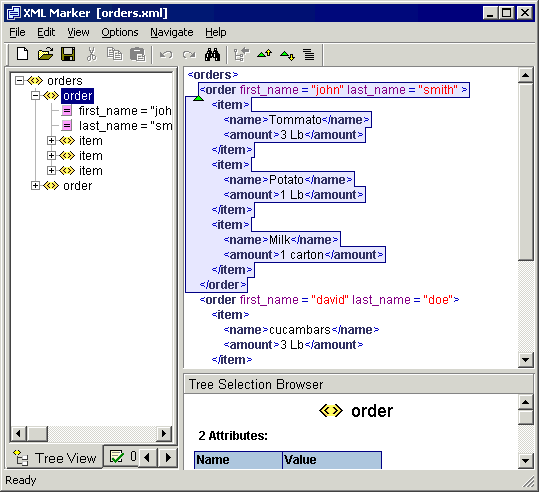

For an example of a class containing a TreeViewState field, see Example 1: A simple TreeView, below.
Html treeview how to#
More info See in Glossary or entering Play mode (see documentation on extending the Editor for information on how to do this).
Html treeview code#
Add the TreeViewState as a field in your EditorWindow-derived class to ensure that user-changed states are not lost when reloading scripts A piece of code that allows you to create your own Components, trigger game events, modify Component properties over time and respond to user input in any way you like. The TreeView itself is not serializable - it is reconstructed from the data that it represents when it is constructed or reloaded. TreeViewState is the only state that is serializable. TreeViewState ( TreeViewState) contains state information that is changed when interacting with TreeView fields in the Editor, such as selection state, expanded state, navigation state, and scroll state. The most important classes aside from the TreeView itself are TreeViewItem and TreeViewState. This item is the root of all other items. The TreeView has a single root TreeViewItem which is hidden and does not appear in the Editor. Each TreeViewItem contains parent and children information, which is used by the TreeView to handle navigation (key and mouse input). The rendering of the TreeView is handled by determining a list of expanded items called rows. This can be a C# tree model, or a Unity-based tree structure like the Transform hierarchy. You can construct TreeView using any tree data structure you prefer. Note that the TreeView is not a tree data model. Example of a TreeView with a MultiColumnHeader and a SearchField.

See Unity Scripting API documentation on TreeView for information about the available TreeView API functions. Use TreeView to create highly customizable list views and multi-column tables for Editor windows, which you can use alongside other IMGUI controls and components. TreeView is an IMGUI control used to display hierarchical data that you can expand and collapse. For information about IMGUI and customizing Editor windows, refer to Extending the Editor and the IMGUI Unity blog. A unit test doesn't even have to know that a UI framework is involved.The information on this page assumes the reader has basic knowledge of IMGUI (Immediate Mode GUI) concepts. Keeping things decoupled and limit unnecessary dependencies is important if you want to avoid pain during a future migration.Īnother huge benefit of this design is that it's very unit test friendly. However, this is not meant as a criticism of Angular, but rather a consequence of how fluid the JavaScript framework situation is at the moment. You may find it odd that I advocate that you limit the use of Angular in an Angular tutorial. Aurelia, Angular 1.x, ReactJS, whatever.). In the end this is just pure typescript that can be ported to just about any other framework (e.g. This is conscious choice since it allows me to decouple the core logic from a having a hard dependency on Angular or any other framework for that matter. If you're still reading you may have noticed that I purposely define most of the logic in the model class – not in the angular component.


 0 kommentar(er)
0 kommentar(er)
